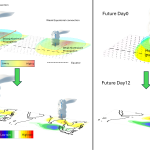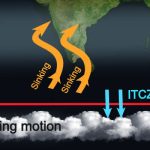
Scientists have speculated that a supervolcano erupted about 65 million years ago (65 Ma), which drastically affected the Earth’s climate, resulting in the fifth mass extinction. The eruption of magma onto the planet surface occurred just underneath the then Indian plate, in a location known as Réunion (presently in the southern Indian Ocean). Scientists have suggested that the volcanism probably created India’s Deccan plateau and affected the dynamics of the Indian plate in many ways.
Using numerical models of mantle convection, Jyotirmoy Paul and Attreyee Ghosh from the Centre for Earth Sciences show that due to the Réunion plume eruption, about 130 km of the Indian continental lithosphere might have eroded away, making it an unusually thin plate compared to other continental plates. In addition, the plume material could have lubricated the boundary between the Indian plate and the underlying mantle.
As a result, the Indian plate could slide over the mantle very quickly, achieving the highest velocity ever by any plate (~20 cm/year) since 65 Ma. This could be a potential reason for the massive impact between the Indian and the Eurasian plates, ultimately forming the world’s tallest mountain chain – the Himalayas.






